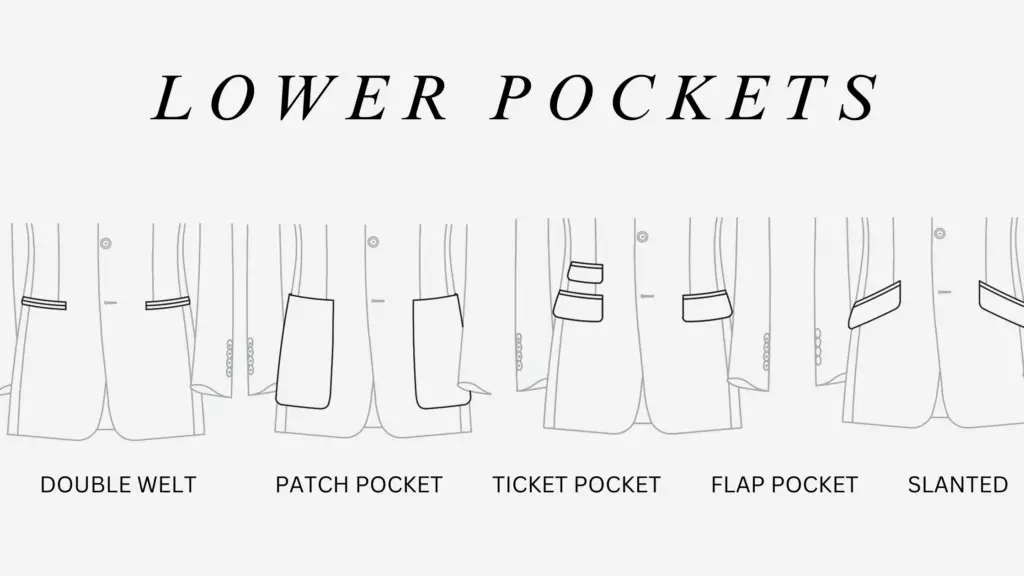When it comes to dressing well, most people focus on the obvious: the fit, the fabric, the color. But often, it’s the smaller details that separate a decent suit from a truly refined one. One of those subtle yet significant features? Pockets.
From business meetings to formal galas and even casual weekends, the type of pocket on your jacket quietly communicates your style, intention, and taste. Some add sophistication, others nod to tradition, and a few offer relaxed charm. Understanding how pocket styles vary and when to choose each can completely transform how your suit feels and functions.
In this guide, we’ll break down four main types: flap, jetted, patch, and ticket pockets. Whether you’re selecting your first tailored piece or refining your growing collection, these details will help you make smarter style choices, pocket by pocket.
The Basics: Why Pocket Style Matters
At first glance, a suit pocket may seem like a small, functional feature. But in the world of classic menswear, details like pocket styles help define the overall tone of a jacket, just as much as its cut, color, or lapel shape. Choosing the right pocket isn’t just about utility; it’s a matter of style, formality, and personal expression.
Every pocket placement and design serves a purpose. Some are meant to blend in, keeping a clean silhouette. Others are designed to stand out, adding a bit of character or even historical flair. The placement of a ticket pocket, the casual feel of a patch pocket, or the formality of a jetted one can make all the difference in how your jacket is perceived and how you feel wearing it.
If you’re serious about tailoring a suit that reflects your lifestyle, the pocket style deserves thoughtful attention. Whether you’re heading into a boardroom, a garden wedding, or an evening gala, the right choice will elevate your entire look without saying a word.
Jetted Pockets – The Sleek Classic
Jetted pockets are the most refined and minimalist pocket style. Recognized by their slim, horizontal slits that sit flush with the fabric, they’re stitched into the lining of the jacket with only a narrow opening visible from the outside. There are no flaps, no extra stitching, just clean, uninterrupted lines.
This streamlined look makes jetted pockets the go-to choice for formal occasions. You’ll often find them on tuxedos, dinner jackets, and other high-end pieces where a smooth silhouette is key. Their subtle presence doesn’t interrupt the flow of the fabric, which is exactly what gives them such timeless elegance.
Pairing a white suit with jetted pockets, for instance, heightens the sophistication and keeps the ensemble crisp and polished. They’re not designed for storing bulky items, just a sharp, elegant appearance. If your event calls for black-tie or you want your jacket to feel sleek and modern, jetted pockets are the way to go.
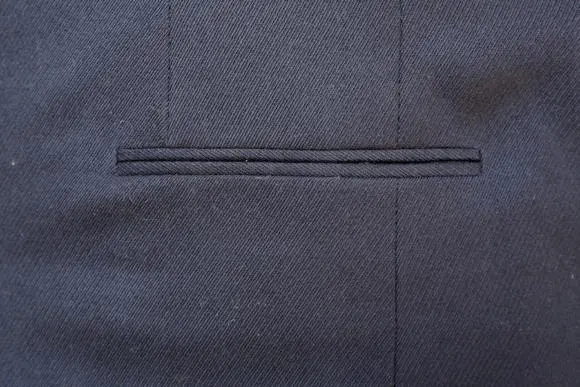
Flap Pockets – The Everyday Standard
Flap pockets are the most common type found on modern suit jackets—and for good reason. They offer a perfect balance between formality and practicality. Structurally, they’re similar to jetted pockets but with one key difference: a rectangular flap of fabric covers the pocket opening, adding a subtle layer of detail and depth.
This extra piece doesn’t just serve a decorative purpose; it also helps protect the contents of your pocket from light rain or accidental slips. That’s part of what makes flap pockets so versatile. They look just as appropriate in the office as they do at a semi-formal event.
You’ll find flap pockets on everything from navy business suits to charcoal blazers, and they work seamlessly with both single breasted suit and double-breasted cuts. While they may not offer the sleek elegance of jetted pockets, flap pockets are an ideal everyday choice for men who want a classic, reliable look that still feels sharp.
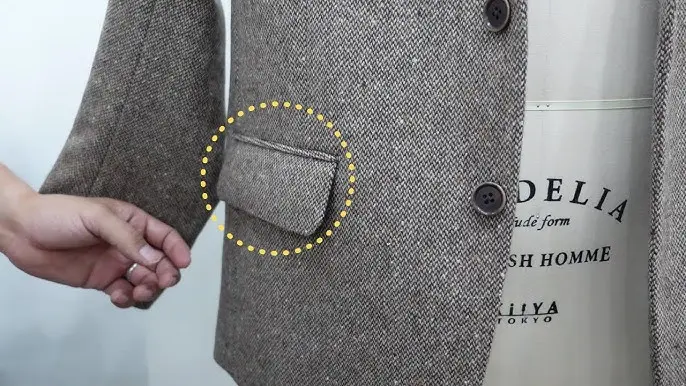
Patch Pockets – The Casual Statement
Patch pockets are the most laid-back and relaxed of all the jacket pocket styles. Unlike jetted or flap pockets that are sewn into the lining, patch pockets are stitched directly onto the outside of the jacket, making them clearly visible and adding a touch of rugged charm.
Their casual appeal makes them ideal for sports jackets, blazers, and weekend tailoring. A classic example would be summer linen blazers or lightweight wool jackets, where comfort and a less formal vibe are key. While they’re not typically seen on formal suits, they excel in smart-casual settings, perfect for brunch meetings or creative work environments.
Since patch pockets break up the clean lines of a jacket, they offer a bit more personality. When paired with a mens suit jacket in earthy tones or textured fabrics, patch pockets create a look that’s approachable yet stylish. Think less boardroom, more “creative director off-duty.”
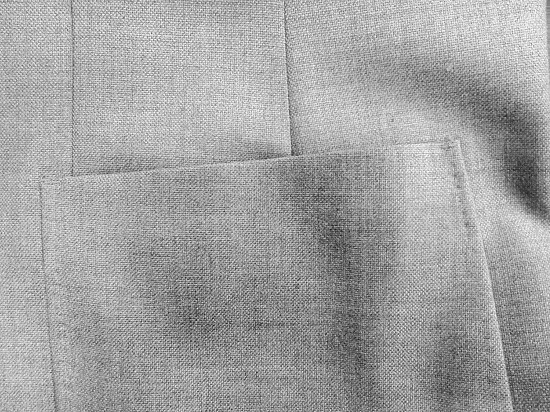
Ticket Pockets – The Subtle Extra Detail
The ticket pocket is a small, additional pocket usually placed above the right-side main pocket on a jacket. Historically, it served a functional purpose — British gentlemen would tuck their train tickets into this space for easy access. Today, it’s a stylish nod to tradition, adding a layer of visual interest and tailored sophistication.
You’ll often find ticket pockets on more structured or traditional styles, such as tweed jackets and country-inspired suits. They also appear on some double breasted suit designs, contributing to a slightly more formal, heritage-driven aesthetic.
The presence of a ticket pocket can subtly signal attention to detail and a love for classic tailoring. It’s not essential for every outfit, but if you want to elevate a standard jacket or give your ensemble a bit of British flair, this detail might be your best-kept secret.
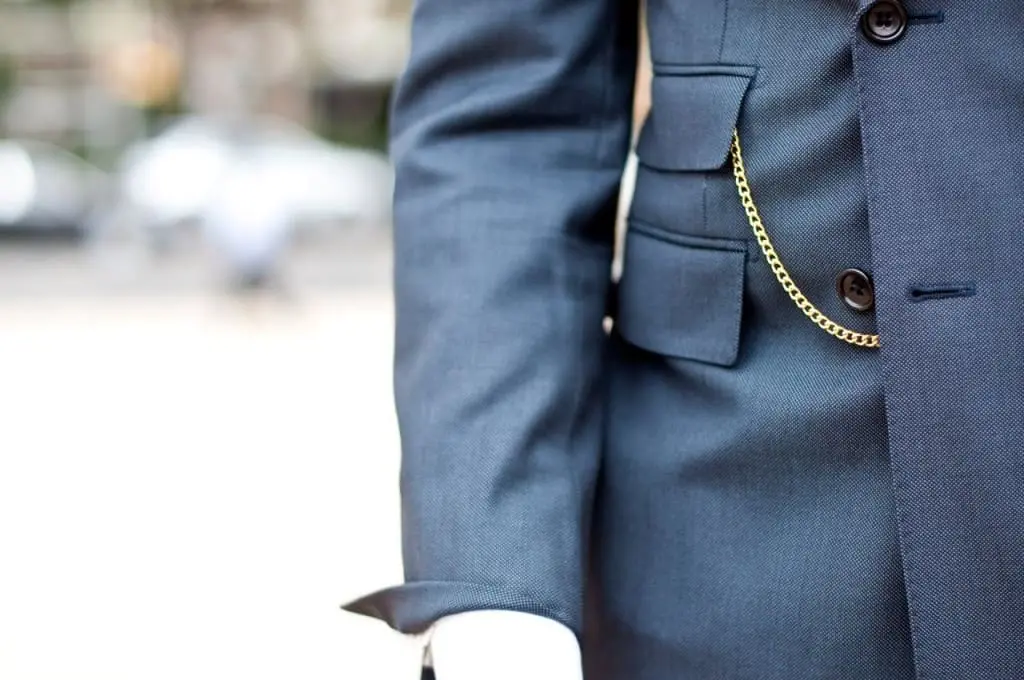
Choosing the Right Pocket for the Occasion
Just as suit fabrics and colors vary by context, pocket styles also play a role in dressing appropriately. The key is understanding what message your pocket choice sends and how it aligns with the event or setting.
- For formal events such as weddings, galas, or black-tie affairs, opt for jetted pockets. Their sleek profile matches the elegance of a tuxedo or a dark suit, think black suiting or deep navy.
- For business settings, flap pockets are a safe and stylish choice. They work well on tailored suits and complement professional environments without feeling overly rigid.
- For relaxed or creative occasions, patch pockets shine. A mens gray suit with patch pockets, for instance, can strike the perfect balance between polished and casual—ideal for less conventional workplaces or social meetups.
- For style-conscious wearers, the ticket pocket adds a quiet dash of individuality. It’s particularly effective when you want to show off refined tailoring without going over the top.
Whatever the occasion, be mindful of how the pocket style blends with your jacket’s cut, the fabric texture, and your personal aesthetic. When chosen thoughtfully, even the smallest detail, like a pocket, can elevate your entire look.
Pockets and Accessories — Making Them Work Together
Your suit pockets don’t just serve a functional role—they frame and support some of the most expressive details in menswear: accessories. Chief among these is the suit handkerchief or pocket square, which adds a dash of color, pattern, or personality to your outfit.
The key is subtle coordination. A beautifully folded pocket square should complement your tie, shirt, or jacket without overpowering them. When styling suit and pocket square combos, consider both texture and tone. For example, a soft linen square in muted tones pairs nicely with a textured brown blazer, while silk in brighter hues might work better with a dark, smooth wool jacket.
Not all pockets are designed to hold accessories. The chest pocket is typically where your square belongs, not in lower flap or jetted pockets, which are best left empty or used discreetly. Overstuffing any pocket can disrupt the clean silhouette of your suit pocket and make the jacket sit awkwardly.
Small accessory touches, when thoughtfully paired with the right pocket style, can turn an everyday look into a confident expression of personal style.
Final Thoughts – Small Detail, Big Impact
Suit pockets may seem like a minor feature, but they quietly shape the overall tone of your outfit. From the polished edge of a welt pocket to the easy charm of a patch pocket, each style plays its part in how your suit presents you to the world.
When selecting a jacket, be it for a special occasion, daily wear, or personal flair, consider how the pocket choice reflects your lifestyle and taste. A white suit male ensemble might command attention, but the subtlety of a jetted pocket ensures it remains refined. A tailoring a suit session isn’t complete without giving thought to pocket style, because the right detail doesn’t just add function, it completes the form.
In the end, true style lives in the details. Master the art of the pocket, and you’ll elevate not just your jacket but your entire presence.

